selected item
3 min read
•Picturing progress
How a mural captured a shared vision for land
- A live mural created during Imperial’s Kearl Operations reclamation planning session captured Indigenous voices, hopes and environmental themes, transforming a technical meeting into a shared, emotional experience.
- The mural encouraged meaningful conversation and collaboration, allowing community members to share imagery and ideas that were visually honoured — creating a sense of inclusion and mutual respect.
- The phrase “Returning the Spirit to the Land” embodied a deeper vision of reclamation, emphasizing the return of plants, animals and people — blending western science with Indigenous knowledge for lasting impact.
3 min read
•They say a picture is worth a thousand words — but at Imperial’s Kearl Operations, a single mural captured so much more.
For Anne Simpson, Environmental Manager with Fort McMurray 468 First Nation, the mural wasn’t just beautiful — it was a symbol of real, tangible listening.
“Often, you say something in a large meeting and never know where your comment goes,” says Anne. “But this mural made people feel heard. It was a concrete, physical demonstration of listening.”
As the Nation’s technical advisor, Anne has participated in Kearl’s Reclamation Planning Group for two years. This year’s session, she says, was a major step forward.
“Last year, there was too much technical presentation and not enough discussion. But this year, Imperial really listened. There was space for conversation, questions — and then there was the artist. That changed everything.”
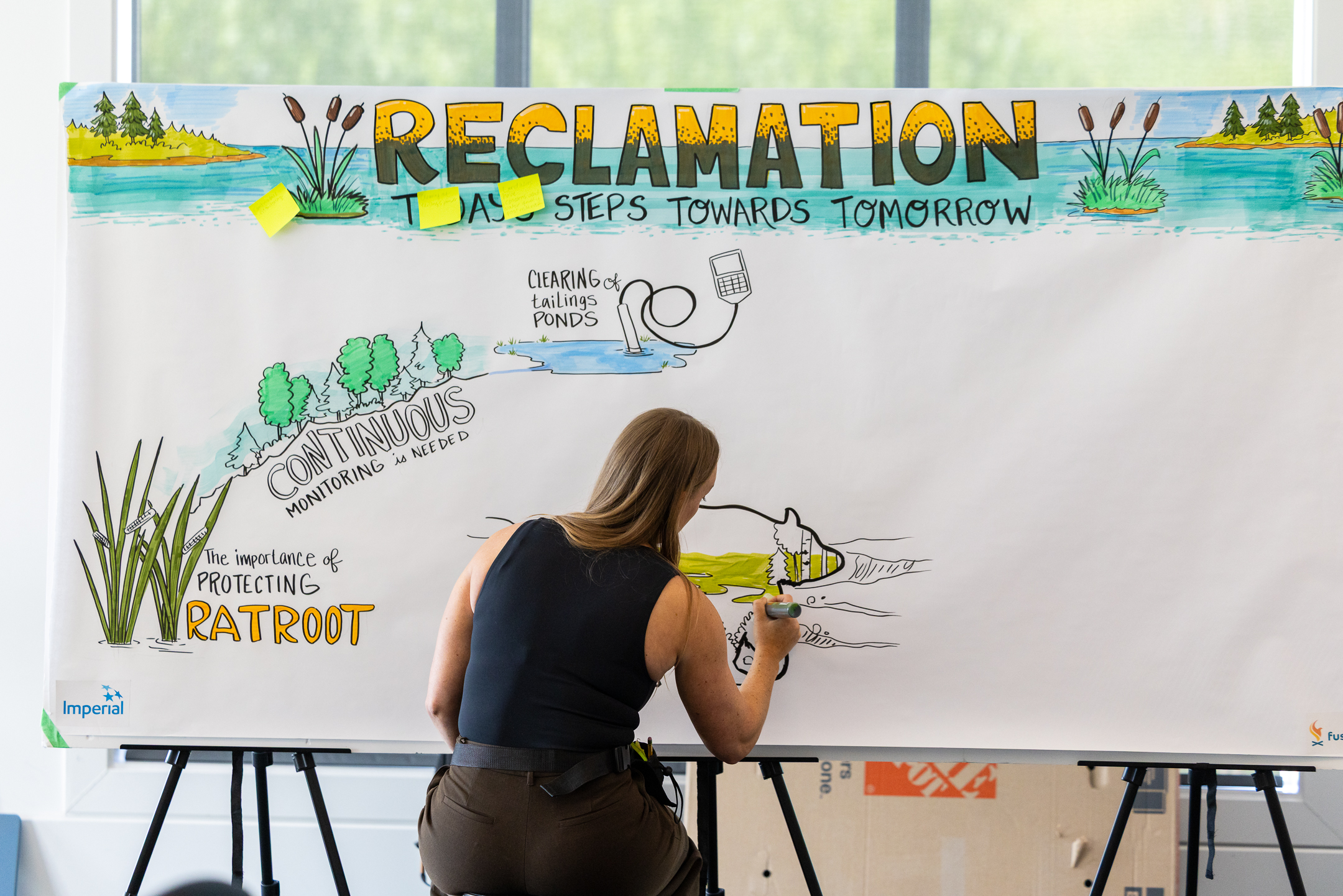
The artist, from Fuselight Creative, sketched live throughout the meeting, visually capturing key themes, hopes, and feedback from both Imperial’s reclamation specialists and Indigenous participants. The result was a vivid, emotional mural that wove together science and story, memory and aspiration.
Community members were quick to connect with the artwork — some approaching the artist during breaks to request specific imagery, such as rat root, the pitcher plant, or even the buffalo. Anne witnessed this firsthand.
“The spirit of what people were saying came through,” she says. “Birds, fish, streams — the mural reflected what people remember and hope to return to.”
Jeremy Mitchell, a reclamation engineer at Imperial’s Kearl operations, agrees.
“Historically, these meetings can feel one-sided,” he says. “We present; we talk. But this time, it was different. The mural helped shift the dynamic — it became a shared experience.”
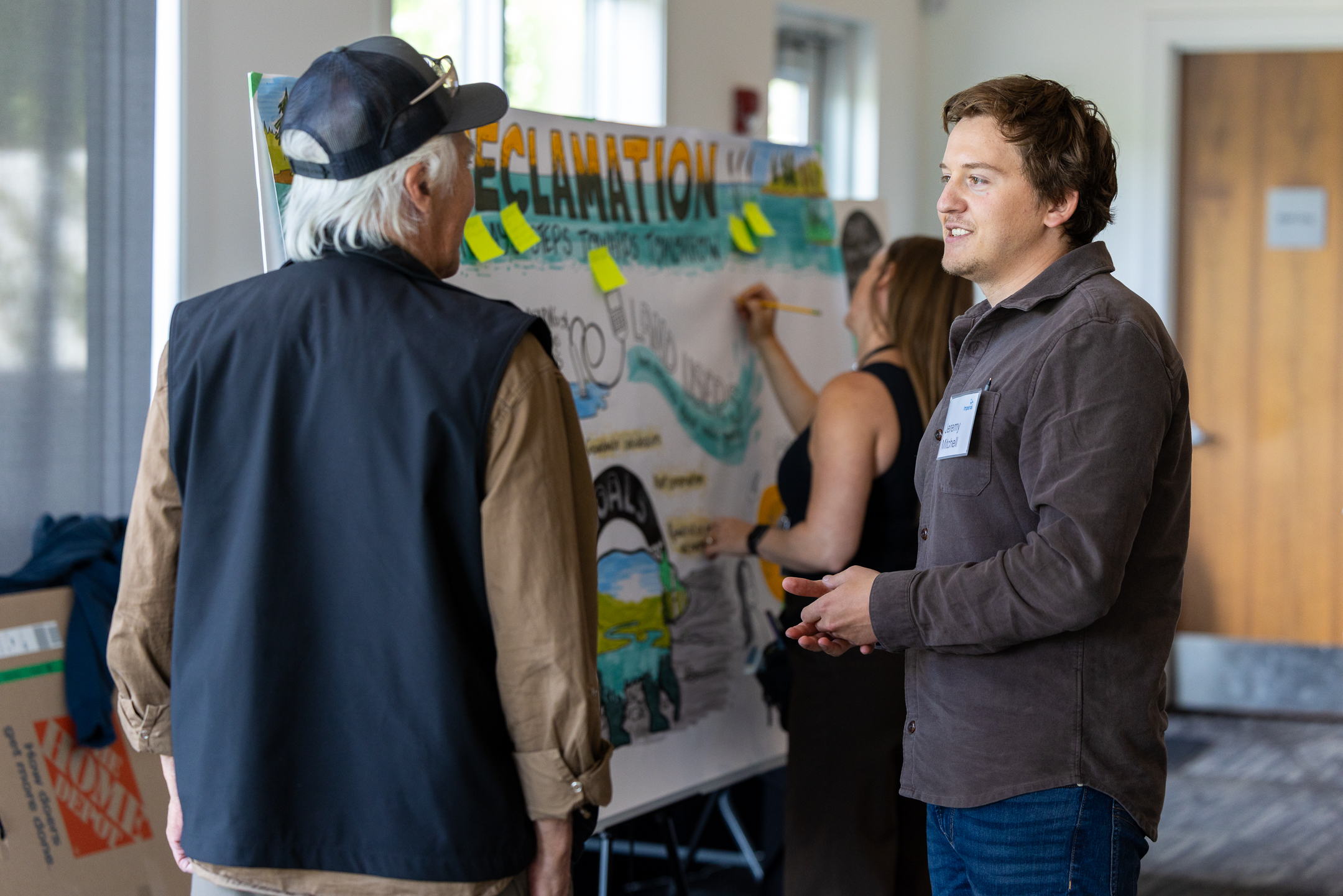
One of the mural’s most striking visuals depicts a woman with outstretched arms, embracing three overlapping circles labeled “Communities,” “Working,” and “Together.” Another powerful phrase painted on the canvas — “Returning the Spirit to the Land” — was a concept that came from the community.
“That phrase resonates,” says Anne. “Right now, the land still feels closed. Returning the spirit means more than replanting trees — it means returning the plants, the animals, and the people who once used the land. That’s reclamation.”
The next day, the mural was brought to a nearby compensation lake for a field visit — another moment of connection Anne believes was vital.
“It was beautiful. The organizers made sure everyone felt comfortable and included. There was shade, lunch, time to ask questions — even a bit of fishing. It wasn’t complicated, but it mattered. It helped make reclamation feel real.”
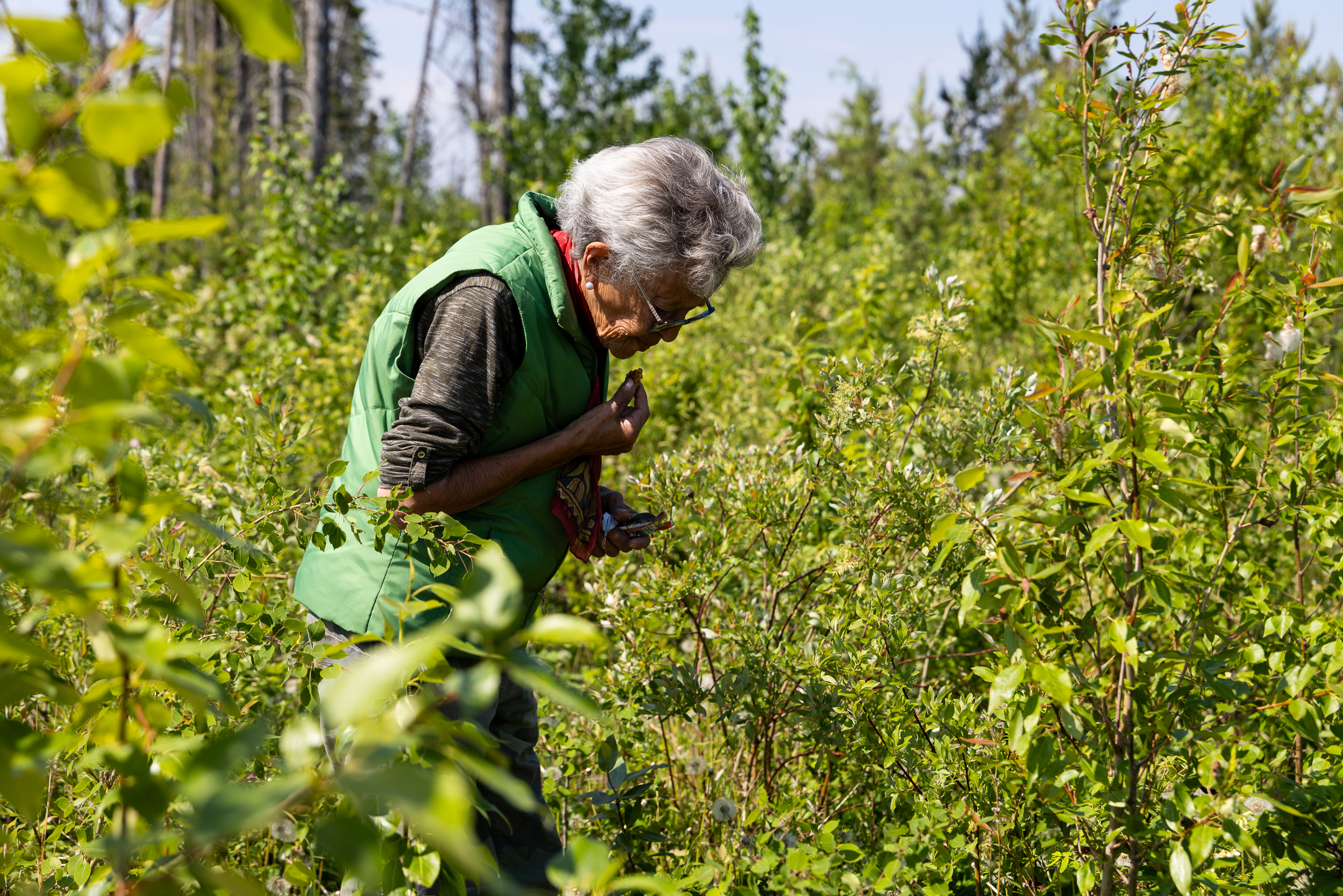
For Anne, whose background includes more than two decades in the energy sector, these shifts toward inclusion and lived experience mark a powerful evolution.
“Western science is easy. But incorporating Indigenous knowledge — that takes effort. And it’s worth it. What you learn about the land from community members is irreplaceable.”
The mural, she says, should be more than a one-off. She hopes it will become a recurring tradition, evolving with each year’s discussions and deepening understanding.
“Bring it back next year, build on it. Over time, we’ll see how thinking changes. What people once hoped for, and how that hope shifts.”
For Imperial, the experience has already sparked interest across teams. More groups are asking how they can use visual storytelling in future engagements — not just to communicate, but to connect.
“The mural isn’t just art,” says Jeremy. “It’s emotional. It’s cultural. It’s a record of human experience — one that spreadsheets and reports can’t fully capture.”
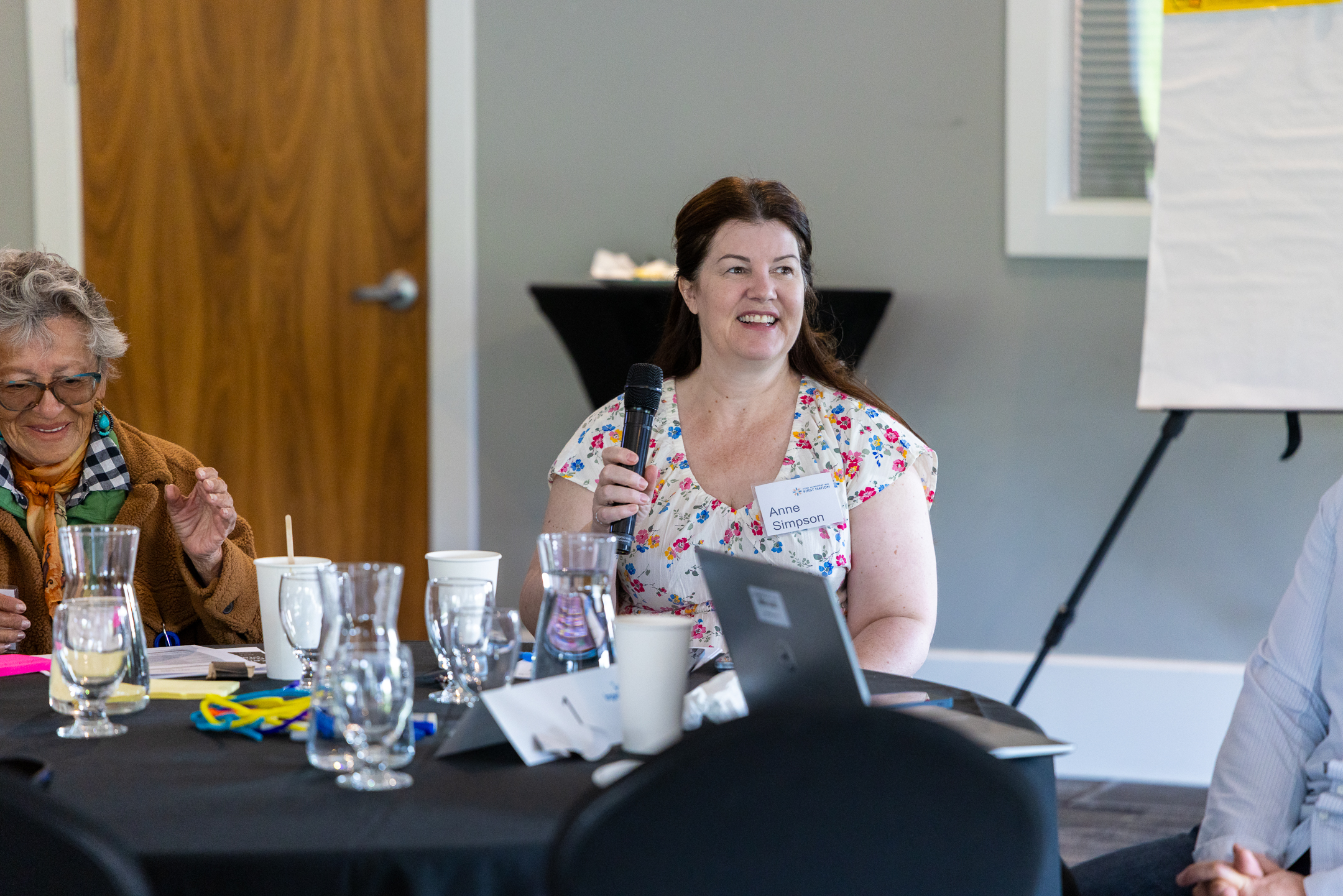
Stories
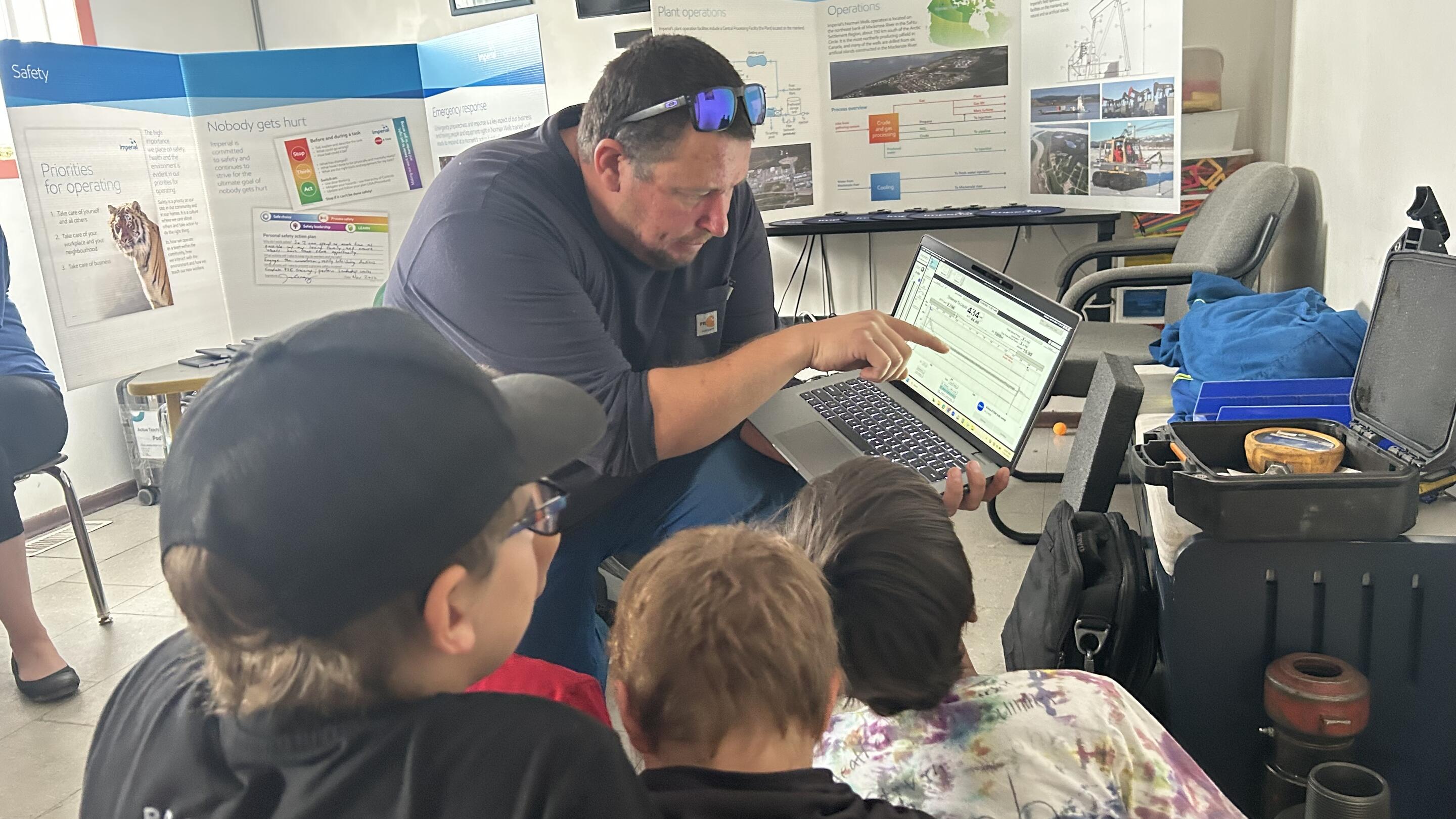
STEM in the Sahtú: Learning that reflects the land
3 min read
•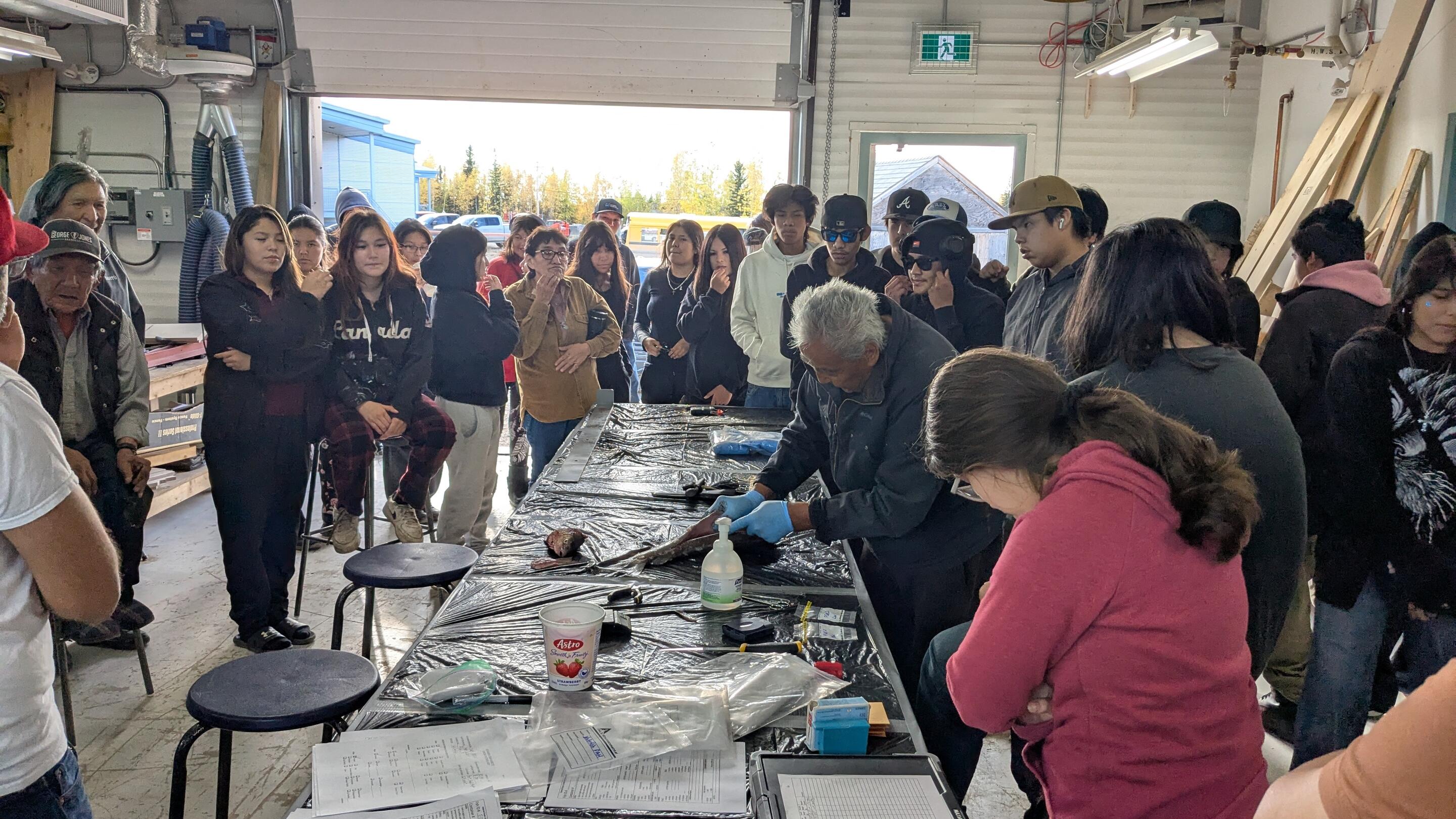
Connecting Conventional Science and Indigenous Traditional Knowledge
2 min read
•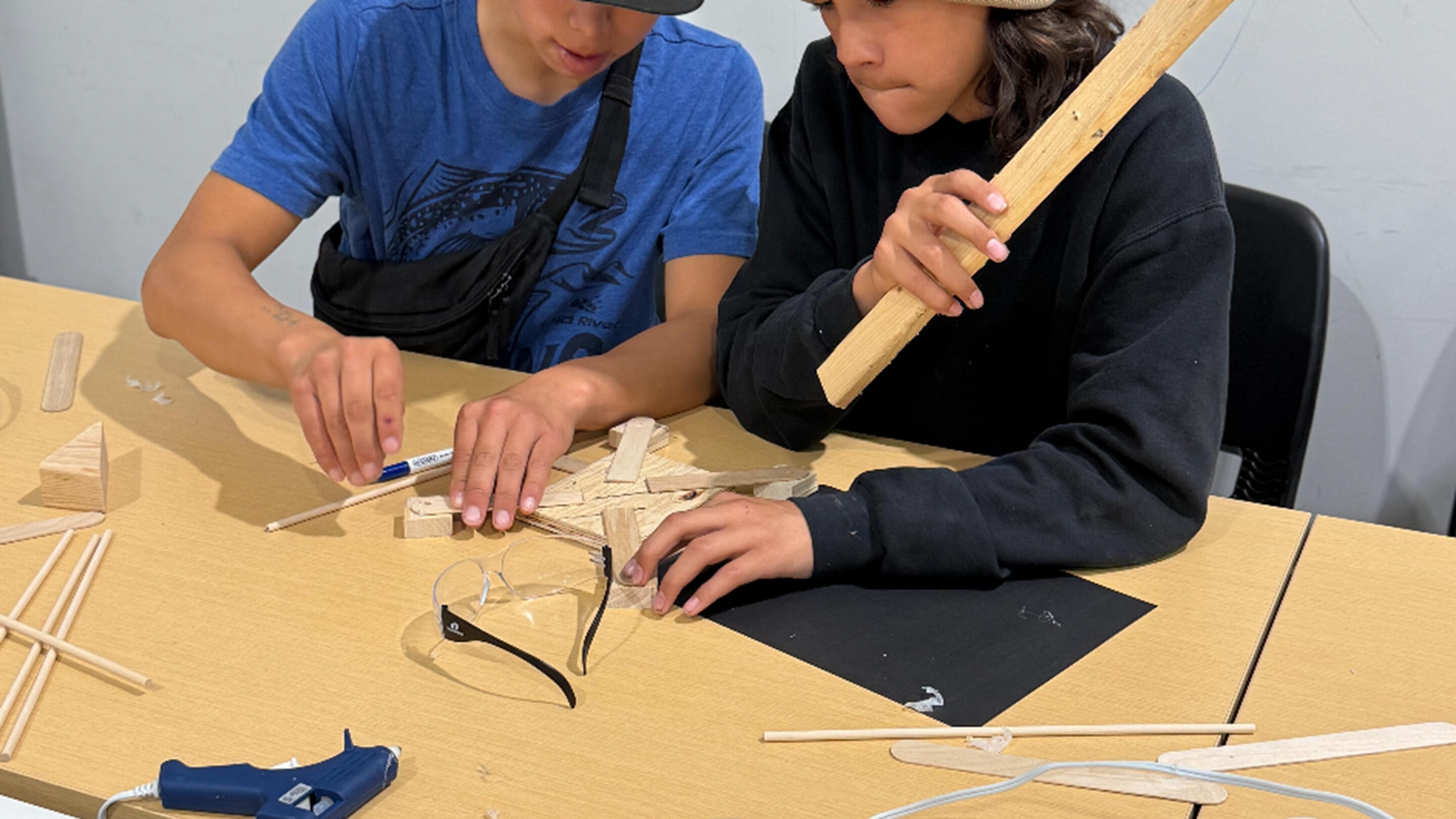
Full STE(a)M ahead
2 min read
•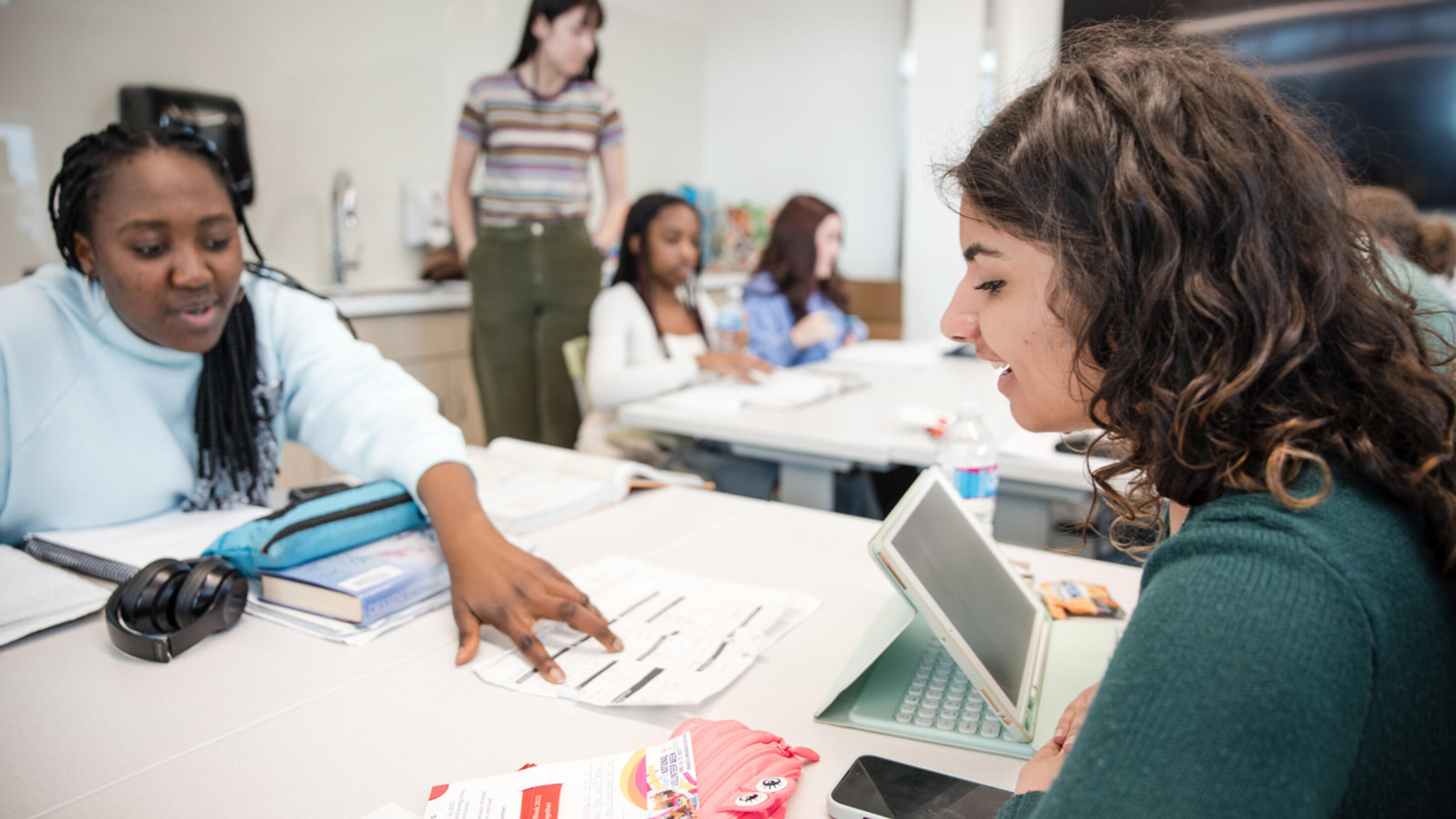
Imperial’s support expands All In for Youth tutoring program to include science
3 min read
•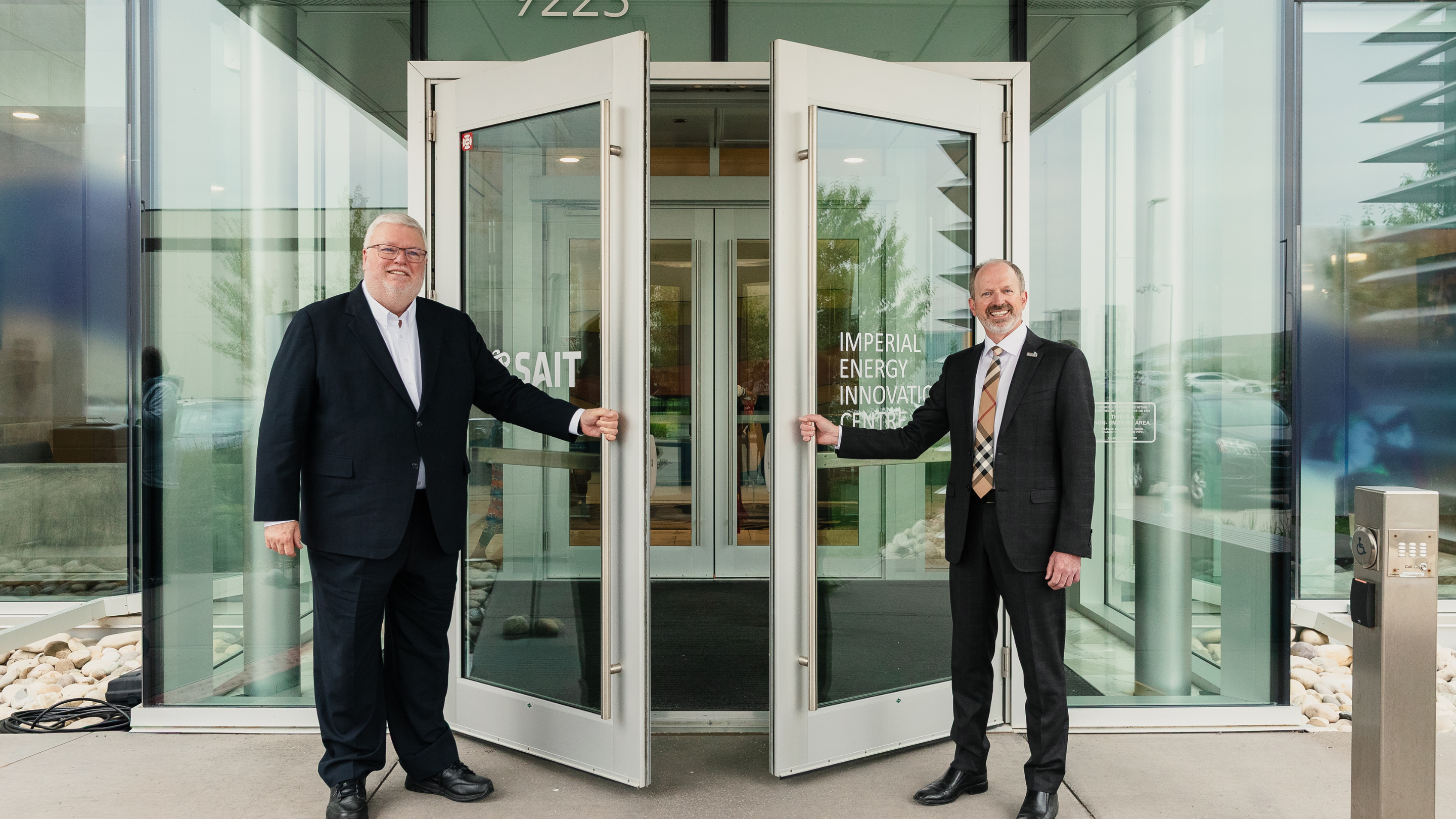
Imperial’s $37M donation expands to students and STEM
3 min read
•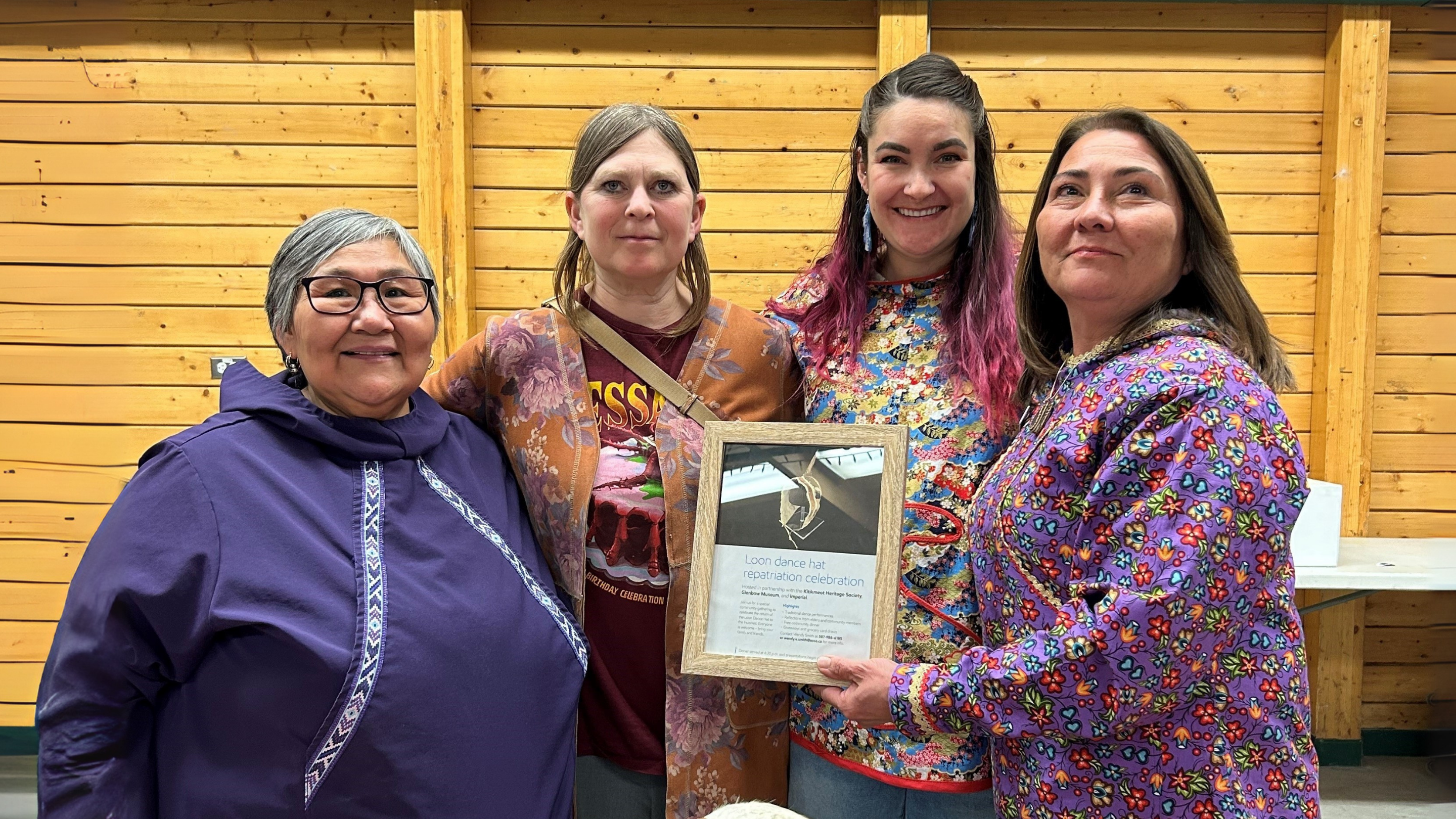
A hat comes home
3 min read
•